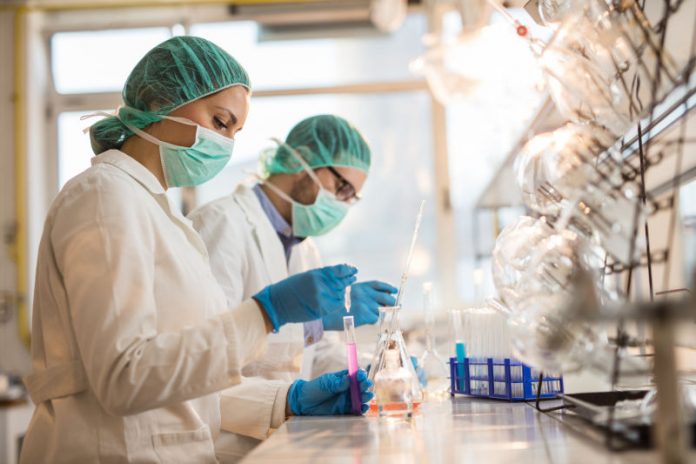The COVID-19 pandemic has drawn attention to clinical laboratory testing as never before. Journalists, public officials, and people worldwide now understand that testing is key to managing the crisis. What are the images associated with this conviction? Gowned workers acquiring nasal swabs, often through car windows, are commonly portrayed in the media.
But what about the actual analysis once the specimen is received in the laboratory? The scientific complexity underlying the most common test for SARS-CoV-2 belies the simplicity of the specimen, and the eagerly awaited positive or negative result. But the complexity of the analyses performed behind the scenes by clinical laboratory professionals are not typically communicated to the public.
The adaptation of the polymerase chain reaction for diagnosis of COVID-19 and the genetic sequencing of the virus necessary for its development will stand as paired achievements transforming the history of the pandemic. Nearly 1 million tests per day are currently performed in the clinical labs (hospital, proprietary, and public health) of the US, providing data to drive the public health response. Guided by the application of basic science, the historic mission of the clinical laboratory, and commitment to patient outcomes, the skilled professionals of the laboratory community have proceeded to this stage without fanfare, even as logistical barriers, supply chains, and regulatory disfunction have produced roadblocks.
What do clinical laboratory professional do?
While physicians, nurses, and first responders are rightfully hailed as heroes, practitioners who do not interact with patients most often remain unseen and unexamined. In a long campaign to achieve New York State licensure for clinical lab professionals in 2005, advocates often cited the figure 70 percent as the contribution of clinical lab results to the average medical diagnosis. We should not miss the opportunity to educate the public to the critical role of lab testing in their health care.
Considering only COVID-19, on top of the massive task of diagnostic and epidemiologic screening, hospitalized patients need dozens of additional lab tests per day to manage volatile clinical situations. Tests are scientifically interdisciplinary, and require the full spectrum of technical skill, from manual to robotic applications. Gauging the immune status of patients and the wider population also falls to clinical labs. This involves a rapidly changing mix of analyses to measure anti-viral antibody, cellular immunity, and markers of inflammation. If risk of infection is associated with patient contact, it is also significant for laboratory practitioners. Patient specimens, the starting point of every analysis, are the concentrated expression of the pathogens they may contain. Universal precautions that guide care in infectious disease derive from another pandemic in our time (HIV/AIDS) in which lab personnel were found to contract workplace infections more frequently than other healthcare providers.
Who are clinical laboratory professionals and what is their path to the lab?
Medical laboratory technologist, a profession in which the baccalaureate is the entry level, allows young science graduates to achieve fiscal stability without the persistent debt that derails futures. Graduate opportunities (i.e. biomedical lab management, cytotechnology) and alternative pathways to licensure (i.e. advanced certificates), provide career ladders to keep talent in the lab, and leadership to the profession.
A more prominent depiction of the clinical lab profession emerging from the COVID-19 outbreak could attract more students nationally. University administrators will be persuaded that investment in costly scientific education bears rewards. Patients will be better advocates for a healthcare system they understand in more depth.
Clinical lab professionals are proud of their contribution. Ricky Kwan (BS, MS/MLS) manages laboratory information systems at Mount Sinai Medical Center in NYC. He says, “I believe the COVID-19 pandemic shows the importance of clinical lab services to the overall treatment outcome of the patient. Clinical Lab Services are sometimes known as the “forgotten warriors” in the fight to save a patient’s life. We provide the crucial data to doctors which drives their choice for the best treatment option. We need to celebrate the work that clinical laboratorians do.”
Author: Regina Linder, PhD
Regina Linder (BS, CCNY; MS, UMass; PhD, NYU) is Professor Emerita, Medical Laboratory Sciences (MLS), Hunter College (CUNY). A medical microbiologist, her research focuses on the collaborative cytotoxins of pathogenic and commensal bacteria, insects and marine organisms. At Hunter since 1982, Regina taught clinical microbiology and served as program director of MLS from 1989 to 2007. Academic program development after formal retirement yielded new graduate degrees. We are immensely proud of MLS alumni who are crucial to the COVID-19 response in NYC.



















































